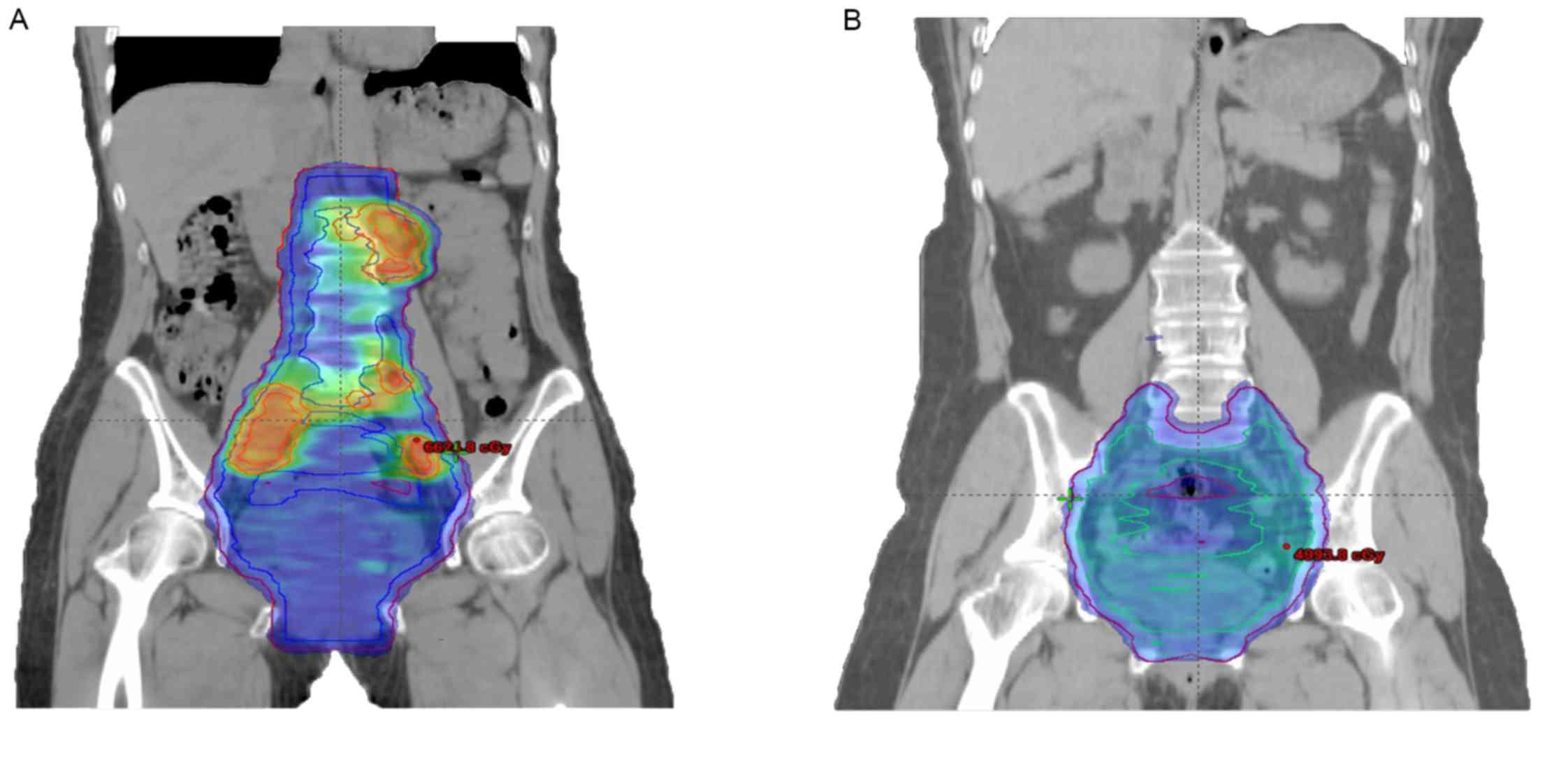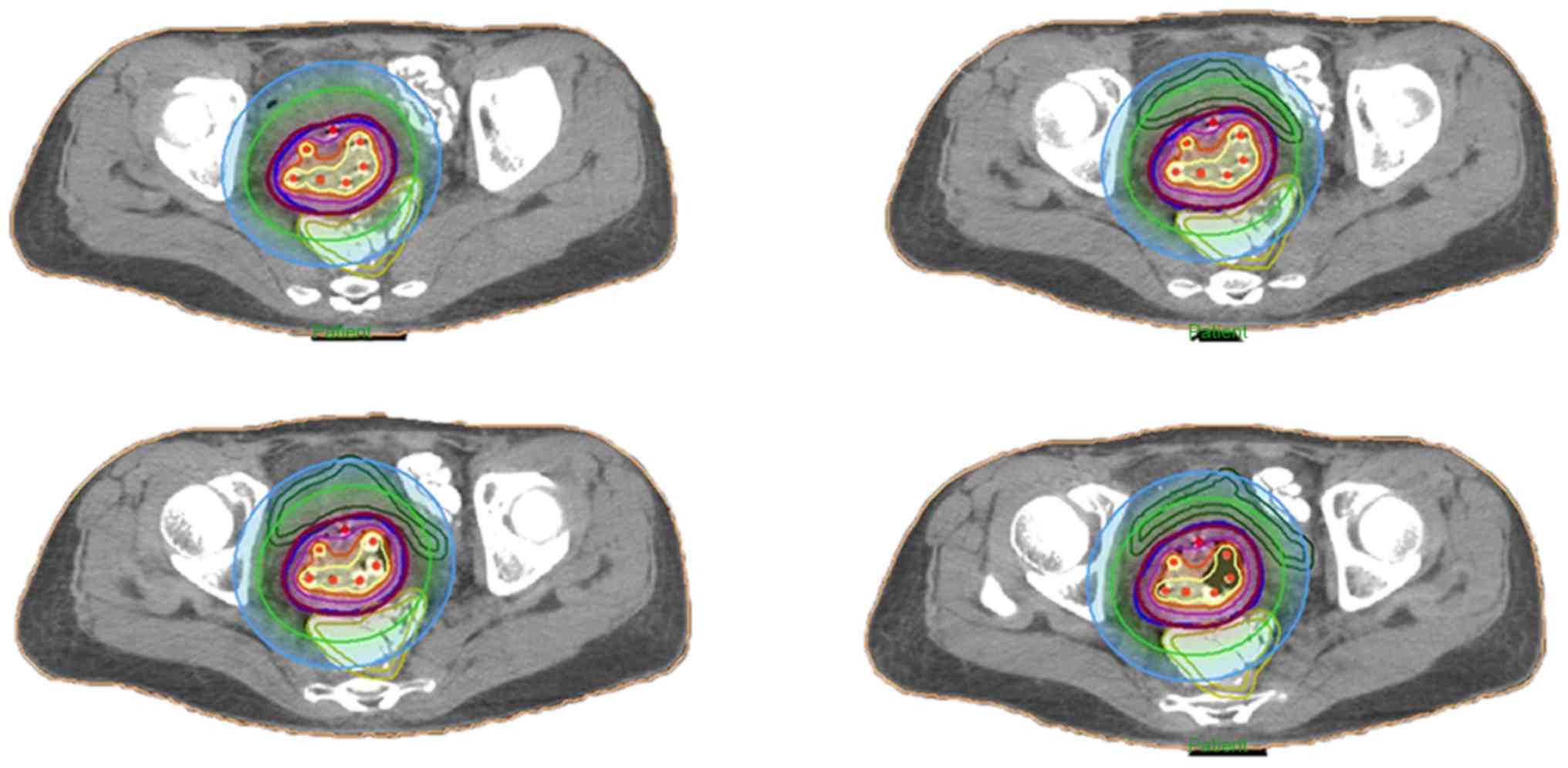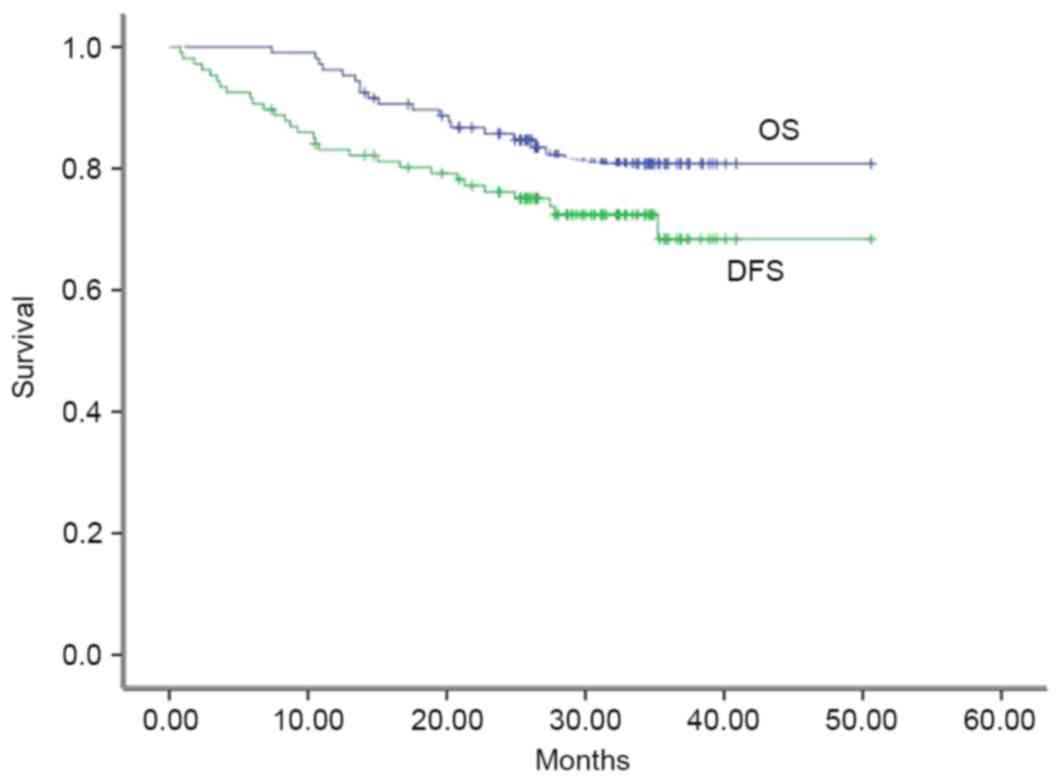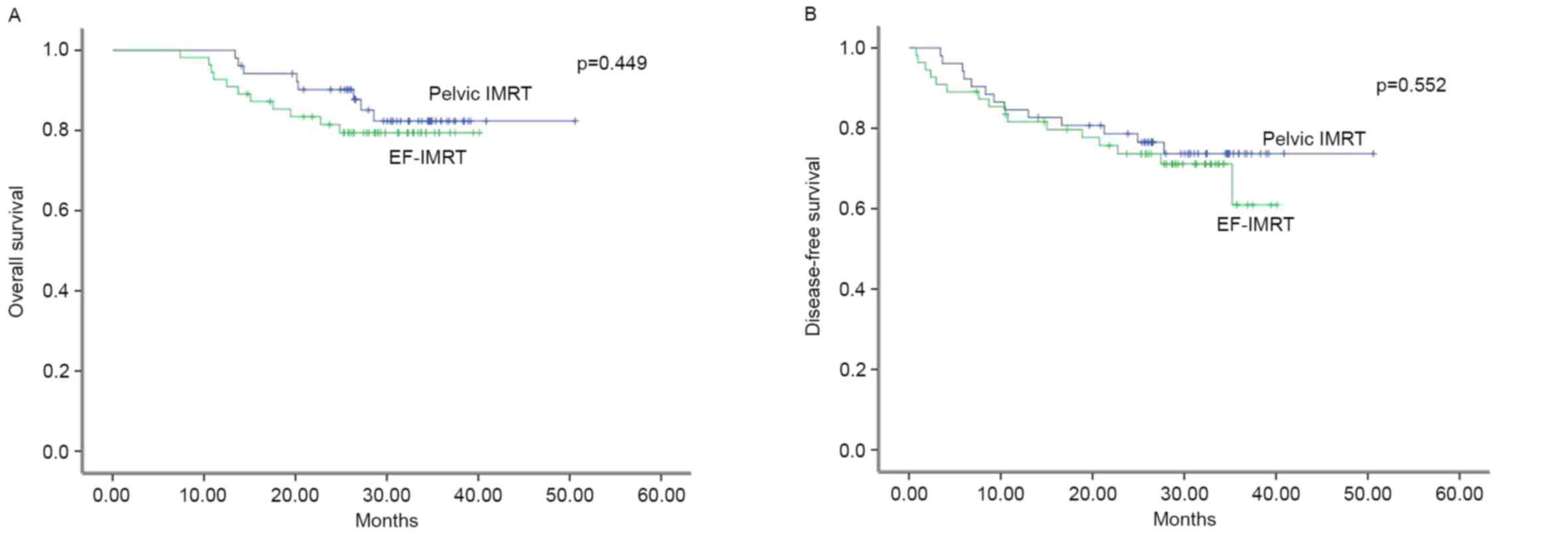|
1
|
Lin MY, Jobling TW and Narayan K: Surgical
staging of para-aortic LN in patients with locally advanced cervix
cancer and no evidence of metastases in preoperative PET/CT
imaging. J Gynecol Oncol. 26:352–354. 2015. View Article : Google Scholar : PubMed/NCBI
|
|
2
|
FIGO Committee on Gynecologic Oncology:
FIGO staging for carcinoma of the vulva, cervix, and corpus uteri.
Int J Gynaecol Obstet. 125:97–98. 2014. View Article : Google Scholar : PubMed/NCBI
|
|
3
|
Kidd EA, Siegel BA, Dehdashti F, Rader JS,
Mutch DG, Powell MA and Grigsby PW: Lymph node staging by positron
emission tomography in cervical cancer: Relationship to prognosis.
J Clin Oncol. 28:2108–2113. 2010. View Article : Google Scholar : PubMed/NCBI
|
|
4
|
Rotman M, Pajak TF, Choi K, Clery M,
Marcial V, Grigsby PW, Cooper J and John M: Prophylactic
extended-field irradiation of para-aortic lymph nodes in stages IIB
and bulky IB and IIA cervical carcinomas. Ten-year treatment
results of RTOG 79–20. JAMA. 274:387–393. 1995. View Article : Google Scholar : PubMed/NCBI
|
|
5
|
Gay HA, Barthold HJ, O'Meara E, Bosch WR,
El Naqa I, Al-Lozi R, Rosenthal SA, Lawton C, Lee WR, Sandler H, et
al: Pelvic normal tissue contouring guidelines for radiation
therapy: A radiation therapy oncology group consensus panel atlas.
Int J Radiat Oncol Biol Phys. 83:e353–e362. 2012. View Article : Google Scholar : PubMed/NCBI
|
|
6
|
Lim K, Small W Jr, Portelance L,
Creutzberg C, Jürgenliemk-Schulz IM, Mundt A, Mell LK, Mayr N,
Viswanathan A, Jhingran A, et al: Consensus guidelines for
delineation of clinical target volume for intensity-modulated
pelvic radiotherapy for the definitive treatment of cervix cancer.
Int J Radiat Oncol Biol Phys. 79:348–355. 2011. View Article : Google Scholar : PubMed/NCBI
|
|
7
|
Kabolizadeh P, Fulay S and Beriwal S: Are
radiation therapy oncology group para-aortic contouring guidelines
for pancreatic neoplasm applicable to other malignancies-assessment
of nodal distribution in gynecological malignancies. Int J Radiat
Oncol Biol Phys. 87:106–110. 2013. View Article : Google Scholar : PubMed/NCBI
|
|
8
|
Oken MM, Creech RH, Tormey DC, Horton J,
Davis TE, McFadden ET and Carbone PP: Toxicity and response
criteria of the eastern cooperative oncology group. Am J Clin
Oncol. 5:649–655. 1982. View Article : Google Scholar : PubMed/NCBI
|
|
9
|
Cox JD, Stetz J and Pajak TF: Toxicity
criteria of the radiation therapy oncology group (RTOG) and the
European organization for research and treatment of cancer (EORTC).
Int J Radiat Oncol Biol Phys. 31:1341–1346. 1995. View Article : Google Scholar : PubMed/NCBI
|
|
10
|
Salama JK, Mundt AJ, Roeske J and Mehta N:
Preliminary outcome and toxicity report of extended-field,
intensity-modulated radiation therapy for gynecologic malignancies.
Int J Radiat Oncol Biol Phys. 65:1170–1176. 2006. View Article : Google Scholar : PubMed/NCBI
|
|
11
|
Yoon HI, Cha J, Keum KC, Lee HY, Nam EJ,
Kim SW, Kim S, Kim YT, Kim GE and Kim YB: Treatment outcomes of
extended-field radiation therapy and the effect of concurrent
chemotherapy on uterine cervical cancer with para-aortic lymph node
metastasis. Radiat Oncol. 10:182015. View Article : Google Scholar : PubMed/NCBI
|
|
12
|
Wu SY, Huang EY, Chanchien CC, Lin H, Wang
CJ, Sun LM, Chen HC, Fang FM, Hsu HC and Huang YJ: Prognostic
factors associated with radiotherapy for cervical cancer with
computed tomography-detected para-aortic lymph node metastasis. J
Radiat Res. 55:129–138. 2014. View Article : Google Scholar : PubMed/NCBI
|
|
13
|
Rajasooriyar C, Van Dyk S, Bernshaw D,
Kondalsamy-Chennakesavan S, Barkati M and Narayan K: Patterns of
failure and treatment-related toxicity in advanced cervical cancer
patients treated using extended field radiotherapy with curative
intent. Int J Radiat Oncol Biol Phys. 80:422–428. 2011. View Article : Google Scholar : PubMed/NCBI
|
|
14
|
Coulombe G, Thiessen B, Balkwill S and
Aquino-Parsons C: Polyradiculopathy post-concomitant chemoradiation
for carcinoma of the uterine cervix treated with pelvic and
para-aortic fields. Gynecol Oncol. 99:774–777. 2005. View Article : Google Scholar : PubMed/NCBI
|
|
15
|
Ahmed RS, Kim RY, Duan J, Meleth S, De Los
Santos JF and Fiveash JB: IMRT dose escalation for positive
para-aortic lymph nodes in patients with locally advanced cervical
cancer while reducing dose to bone marrow and other organs at risk.
Int J Radiat Oncol Biol Phys. 60:505–512. 2004. View Article : Google Scholar : PubMed/NCBI
|
|
16
|
Boyle J, Craciunescu O, Steffey B, Cai J
and Chino J: Methods, safety and early clinical outcomes of dose
escalation using simultaneous integrated and sequential boosts in
patients with locally advanced gynecologic malignancies. Gynecol
Oncol. 135:239–243. 2014. View Article : Google Scholar : PubMed/NCBI
|
|
17
|
Grigsby PW, Siegel BA and Dehdashti F:
Lymph node staging by positron emission tomography in patients with
carcinoma of the cervix. J Clin Oncol. 19:3745–3749. 2001.
View Article : Google Scholar : PubMed/NCBI
|
|
18
|
Sakurai H, Mitsuhashi N, Takahashi M,
Akimoto T, Muramatsu H, Ishikawa H, Imai R, Yamakawa M, Hasegawa M
and Niibe H: Analysis of recurrence of squamous cell carcinoma of
the uterine cervix after definitive radiation therapy alone:
Patterns of recurrence, latent periods, and prognosis. Int J Radiat
Oncol Biol Phys. 50:1136–1144. 2001. View Article : Google Scholar : PubMed/NCBI
|
|
19
|
Gerszten K, Colonello K, Heron DE, Lalonde
RJ, Fitian ID, Comerci JT, Selvaraj RN and Varlotto JM: Feasibility
of concurrent cisplatin and extended field radiation therapy (EFRT)
using intensity-modulated radiotherapy (IMRT) for carcinoma of the
cervix. Gynecol Oncol. 102:182–188. 2006. View Article : Google Scholar : PubMed/NCBI
|
|
20
|
Beriwal S, Gan GN, Heron DE, Selvaraj RN,
Kim H, Lalonde R, Kelley JL and Edwards RP: Early clinical outcome
with concurrent chemotherapy and extended-field,
intensity-modulated radiotherapy for cervical cancer. Int J Radiat
Oncol Biol Phys. 68:166–171. 2007. View Article : Google Scholar : PubMed/NCBI
|













